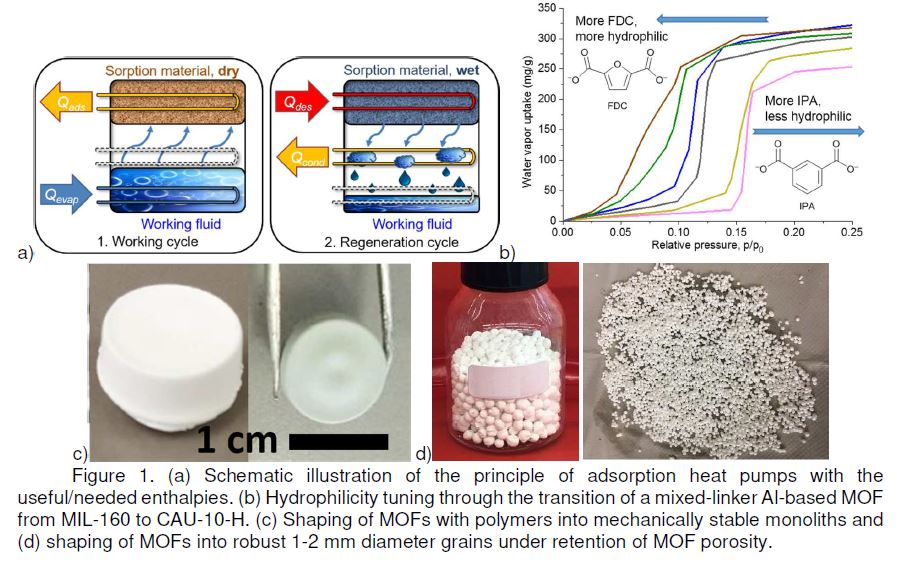
- Cet évènement est passé.
Conférence Professeur Christoph JANIAK
Professeur Christoph JANIAK
Institut für Anorganische Chemie und Strukturchemie,
Heinrich-Heine-Universität Düsseldorf,
40204 Düsseldorf, Germany.
e-mail: janiak@hhu.de
Metal-organic frameworks, (MOFs) for water sorption for cycling heat transformation processes.
Keywords: water sorption, heat transformation, water stability, adsorption heat pumps
Water-stable MOFs with suitable water uptake characteristics can be applied for reversible cycling water sorption in order to achieve low temperature heat transformation applications in adsorption heat pumps (AHPs) [1] as alternatives to conventional compression systems. By using low grade heat as the driving energy, AHPs can significantly help to minimize electricity consumption. AHPs are based on the evaporation and consecutive adsorption of coolant liquids, preferably water (Figure 1a). The process is driven and controlled by the microporosity and hydrophilicity. Yet, the specific temperature boundaries for evaporation, desorption, heat rejection temperature from the adsorbent and the condenser for a desired cycling water sorption application necessitate the tailoring of the adsorbent in terms of hydrophilicity/hydrophobicity for optimized working conditions, which we have addressed here with different aluminum and zirconium MOFs, including a mixed-linker concept of MOF-160/CAU-10-H (Figure 1b) [2] . Further, for applications of MOFs one of the biggest current issues is to find effective methods to shape these powdery materials into monoliths, pellets or surface coatings with sufficient mechanical and chemical stability, maximal bulk density etc. under preservation of the crucial MOF porosity properties (Figure 1c,d).[3]

[1] S.K. Henninger, H.A. Habib, C. Janiak, J. Am. Chem. Soc. 2009, 131, 2776-2777. D.M. Steinert, S.-J. Ernst, S.K. Henninger, C. Janiak, Eur. J. Inorg. Chem. 2020, 4502-4515.
[2] T.J. Matemb et al., Adv. Mater. 2023, 10.1002/adma.202211302; Y. Sun et al., J. Mater. Chem. A. 2020, 8, 13364. C. Schlüsener et al., Chem. Mater. 2019, 31, 4051.
[3] Shutava et al.; Dalton Trans. 2022, 51, 7053. S. Gökpinar et al., Ind. Eng. Chem. Res. 2019, 58, 21493.
